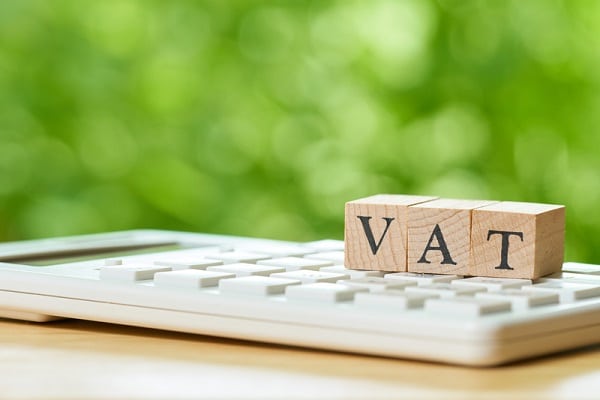Navigating the world of VAT payments can feel like traversing a complex maze. But with the right tools and guidance, you can find the most efficient path through the labyrinth. In this comprehensive guide, we’ll provide you with the key information needed to confidently make your VAT payments online and keep your business running smoothly.
Calculating VAT Obligations
Understanding when and how much VAT to pay is pivotal for UK businesses to ensure timely compliance and avoid penalties. The method used for calculating the VAT you owe to HMRC will vary depending on your specific business circumstances. For most e-commerce businesses, we would recommend using online accounting software called Xero. Xero enables you to calculate and file a VAT return using your bookkeeping data maintained in Xero and send it directly to HMRC from within Xero. Xero tracks the VAT payable and reclaimable on each accounting transaction and collates this information into your VAT return.
The calculation method used will vary depending on the VAT scheme that your business is registered for. The most common scheme is the standard VAT scheme. Under the standard VAT scheme, the VAT due will be the net of the VAT payable on sales invoices less the VAT payable on purchase invoices during the quarter.
When do You Need to Pay Your VAT bill?
Most businesses need to complete a return every quarter, this includes the more lucrative small businesses. The deadline for submission and payment is typically one month and seven days after the end of the specified period. For example, if the three-month period ran from January 1st to March 31st, your return and payment would be due by May 7th. Your quarterly dates will operate on a rolling cycle and do not necessarily have to be tied to a calendar year. It is usually helpful to choose quarters that are co-terminus with your year-end.
VAT Registration
To register, businesses need to apply through the UK Government Gateway. Registration can be quite complex, so we would recommend appointing an accountant to complete the registration process on your behalf to ensure that it is completed accurately. Common examples we see where clients have attempted to do the registration themselves include registering earlier than necessary (and therefore having to pay more Value Added Tax and sooner) or registering for a scheme that isn’t cost-effective for them.
Handling VAT Audits and Compliance
Handling VAT audits and ensuring compliance are crucial aspects of VAT management for UK businesses. VAT audits, conducted by HMRC, assess the accuracy of VAT returns and payments. To navigate these successfully, businesses should maintain meticulous records of all VAT-related transactions, including invoices, receipts, and proof of payments. Regular internal reviews of VAT records can also help identify and rectify discrepancies before they become issues during an audit. Ensuring compliance involves staying updated with VAT legislation, accurately calculating VAT obligations, and timely filing of VAT returns. Proactive management and seeking expert advice when necessary can minimise the risk of penalties and ensure smooth operations during audits.
VAT Payment Methods
HMRC offers several payment methods to settle your bill:
- Online or telephone banking (using the Faster Payments service)
- CHAPS (Clearing House Automated Payment System)
- Direct debit
- BACS (Bankers’ Automated Clearing Services)
- Debit or corporate credit card using BillPay
- Standing order (only for businesses using the Annual Accounting Scheme)
We would recommend that all businesses pay by direct debit. This is because it then takes away the headache of having to remember to pay the VAT, but it also means that the business receives an additional 3 working days before the VAT is paid.
How to Pay VAT by Online Banking/CHAPS/BACS
Paying VAT through online banking is a quick and secure method. Log into your bank’s online platform, use HMRC’s bank details for VAT payments, and include your VAT registration number as the reference. This ensures your payment is correctly allocated. HMRC’s bank details are detailed below:
- Sort code – 08 32 00
- Account number – 11963155
- Account name – HMRC VAT
How to Pay VAT by Direct Debit
Setting up a direct debit through HMRC’s website is efficient, ensuring you never miss a payment. It also grants you an extra three days’ grace period over other payment methods. You do, however, need to ensure that the direct debit is set up at least 3 working days before you submit your VAT return, otherwise, payment cannot be taken by direct debit.
How to Pay Vat by Debit or Corporate Credit Card
Using a debit or corporate credit card through HMRC’s website allows for quick and easy VAT payments. Note, however, that a non-refundable transaction fee may apply to credit card payments. It is important to note that this payment also creates additional bookkeeping work, as the payment will need to be split out in your accounting software between the payment of VAT and bank fees paid.
How to Pay Vat by Standing Order (Only for Businesses Using the Annual Accounting Scheme)
For those on the Annual Accounting Scheme, setting up a standing order simplifies the payment process by spreading it over the year. This helps manage cash flow more effectively. A standing order can either be set up using your online banking account or by sending a VAT 622 form to HMRC.
How to Pay Your VAT Online
- File your return through your online account or use Making Tax Digital (MTD)-compliant software.
- Pay using your preferred payment method.
- Check your online account to see if your payment was received within 48 hours.
Record Keeping for VAT Filing (Using Xero)
Xero is a popular cloud-based accounting software that can help streamline record keeping for VAT filing. It’s the software we’d recommend all e-commerce businesses use to maintain their bookkeeping records. With Xero, businesses can efficiently manage their finances, monitor transactions, and file returns directly to HMRC. Here’s how Xero can help your business with compliance:
1. Automatic VAT Tracking
Xero automatically tracks and calculates VAT on sales, purchases, and expenses, making it easier to keep accurate records. By connecting your bank account to Xero, you can quickly reconcile transactions and monitor transactions in real-time.
2. VAT Reporting
Xero offers comprehensive VAT reporting features, allowing you to generate summaries, detailed reports, and audit reports. These reports can help you analyse your transactions and prepare your VAT return.
3. Making Tax Digital (MTD) Compliance
Xero is fully MTD-compliant, which means you can easily file your VAT returns directly to HMRC through the platform. This seamless integration with HMRC’s systems helps reduce the risk of errors and ensures that your business is compliant with UK tax regulations.
4. Cash Flow Management
Xero’s cash flow management tools enable you to monitor your business’s financial health and ensure that you have enough funds to pay your VAT bill on time. You can create budgets, forecast cash flow, and set up alerts for upcoming VAT deadlines.
5. Integrations and Add-ons
Xero offers numerous integrations and add-ons designed to streamline your business’s financial management. You can connect Xero with e-commerce platforms (we’d recommend doing this via A2X), inventory management systems, and other productivity tools to further enhance your record keeping for VAT filing.
6. Access Anywhere, Anytime
As a cloud-based software, Xero can be accessed from any device with an internet connection, making it easy to manage your finances and VAT compliance on the go. This flexibility allows you to stay on top of your business’s financial health and obligations, even when you’re away from the office.
VAT FAQs
1. What happens if your payment is late?
You may face penalties or surcharges, which are calculated based on a penalty points system (a bit like driving licence points)
2. Is VAT compulsory to pay?
VAT is compulsory for businesses with a taxable turnover above the VAT registration threshold (£85,000 as of 2023).
3. How long do you have to pay VAT?
Payment is typically due one month and seven days after the end of the specified period.
4. Can I defer my payments?
If you cannot pay on time, contact HMRC’s business payment support service to arrange a payment schedule and minimise penalties.
5. Does VAT get refunded?
If you’re owed a VAT repayment from HMRC, you’ll usually be paid within 30 days by direct deposit (if HMRC has your bank details) or cheque.
6. What bank details do I need to pay VAT?
HMRC’s bank details for VAT payments are Account Name: HMRC VAT, Account number: 11963155, Sort-code: 08 32 00. You will need to use your VAT number as the payment reference.
Final Thoughts on Paying VAT
Paying VAT is an essential part of running a successful e-commerce business in the UK. By understanding when and how to pay VAT online, registering on time, choosing the right payment method, and keeping accurate records, you can avoid penalties and ensure smooth financial operations.
As VAT accountants for e-commerce businesses, our service is designed to support and assist your business. Contact us today to set up a non-obligatory consultation on 01942 725419


